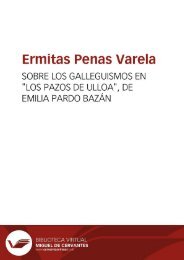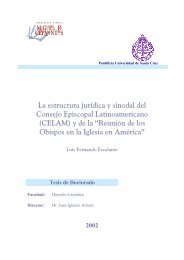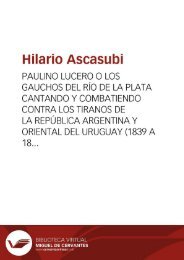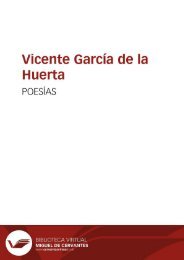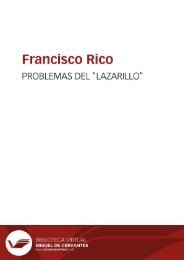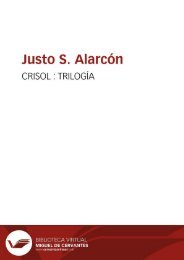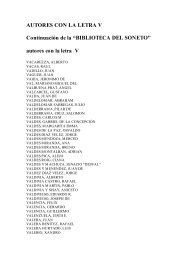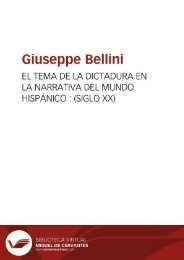Create successful ePaper yourself
Turn your PDF publications into a flip-book with our unique Google optimized e-Paper software.
Anales galdosianos [Publicaciones periódicas]. Año XII, 1977<br />
<strong>Galdós</strong>' Tristana , Anatomy of a «Disappointment»<br />
Roberto G. Sánchez<br />
Tristana (1892), thirteenth among <strong>Galdós</strong>' novelas contemporáneas , received little attention for<br />
many years; not until Gonzalo Sobejano's article, « <strong>Galdós</strong> y el vocabulario de los amantes »,<br />
appeared in 1966 was there a scholarly attempt to study any aspect of the novel in depth 178 . Today,<br />
perhaps due to the success of Luis Buñuel's cinematic version, there is renewed interest in the work<br />
and particularly in its unique heroine who strives for personal independence and declares no interest<br />
in matrimony. As a consequence, most recent studies have focused on discussions of feminism and<br />
its possible reflection in the novel, leaving aside, for the most part, a series of disturbing questions<br />
regarding its merits and deficiencies. 179<br />
« No es de las mejores novelas de <strong>Galdós</strong> », wrote Sobejano in his celebrated article but,<br />
concerned primarily with the stylistic aspect he was pursuing, he elaborated no further. The fact is<br />
that-disappointment with the work was expressed from the outset. « No creo que Tristana debe<br />
incluirse en el número de las mejores novelas de <strong>Galdós</strong>, y quizá pueda calificarse de bastante inferior<br />
con respecto a otras recientes... » wrote Emilia Pardo Bazán in a review following the novel's<br />
publication. 180 The condemnation persisted thereafter, if not declared openly certainly implied by<br />
178 Anales galdosianos , I (1966), 85-100. Reprinted subsequently in his book, Forma literaria y<br />
sensibilidad social , Madrid, 1967.<br />
179 A few articles relating the novel to the film are: José Manuel Ibarrola, « Don Benito Pérez<br />
<strong>Galdós</strong> y el cine », Cuadernos Hispanoamericanos , N.º 250-52, 650-55; Alberto Omar, « Tristana de<br />
<strong>Galdós</strong>, Tristana de Buñuel », Camp de l'Art , N.º 7, 33-35; David Grossvogel, «Buñuel's Obsessed<br />
Camera: Tristana Dismembered», Diacritics , II, 51-56. Among the articles relating the novel to<br />
feminism the following stand out: Emilio Miró, « Tristana o la imposibilidad de ser », Cuadernos<br />
Hispanoamericanos , N.º 250-52, 505-22; Marina Mayoral, « Tristana ¿una feminista galdosiana?<br />
» Ínsula , Nº 320-21, 28. «The Law of Nature and Women's Liberation in Tristana », Anales<br />
galdosianos , VII (1972), 93-100; Ruth A. Schmidt, « Tristana and the importance of opportunity»,<br />
Anales galdosianos , IX (1974), 135-44.<br />
180 Obras completas (Madrid: Aguilar, 1973) III, 1119. Clarín disagreed somewhat with Doña Emilia<br />
and wrote: « Tristana no ha obtenido la atención que merece por parte de la crítica... » (« Tristana<br />
137







